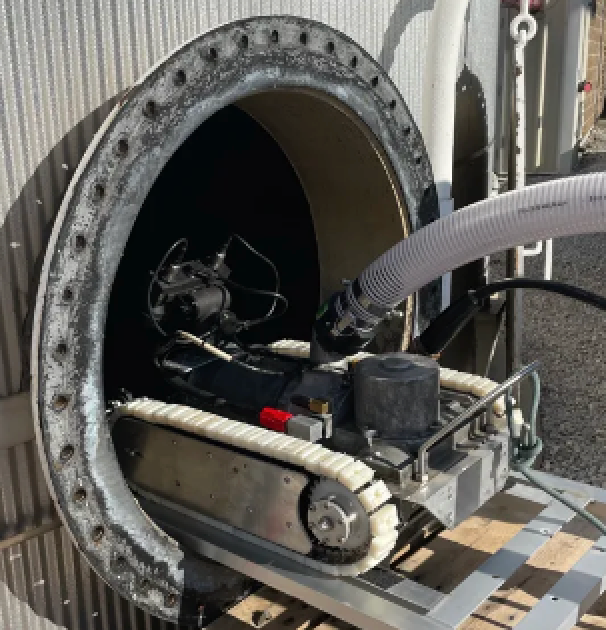Fall Protection Safety Guidelines: Protecting Workers at Height
Falls remain the leading cause of workplace fatalities and serious injuries, making proper fall protection essential for every worker who operates at elevated heights.
From residential roofing contractors to commercial window cleaners, countless workers rely on ladders and scaffolding daily. Understanding and implementing correct fall protection measures isn't just about OSHA compliance—it's about ensuring every worker returns home safely at the end of their shift.
Understanding OSHA Fall Protection Requirements
Height Thresholds by Industry
Fall protection must be provided when workers are exposed to falls from:
- 4 feet in general industry workplaces
- 6 feet in construction activities
- 10 feet when working on scaffolding
- 8 feet in longshoring operations
- 5 feet in shipyard operations
Important: Fall protection is also required when working over dangerous equipment or machinery, regardless of fall distance.
Ladder Safety Requirements
Fixed Ladders
- Over 24 feet: Must have personal fall arrest systems or ladder safety systems
- All heights: Workers must use at least one hand to grasp the ladder while climbing
- Never carry objects that could cause loss of balance
- Minimum 7-inch clearance behind rungs required
Portable Ladders
- No specific fall protection required by OSHA standards
- Must extend 3 feet above the edge they contact
- Set at proper angle (75° from horizontal)
- Both side rails must be securely positioned
- Never use the top step unless specifically designed for standing
Scaffolding Safety Standards
Workers on scaffolding must be protected by guardrails, personal fall arrest systems, or both when:
- More than 10 feet above a lower level
- Working on specific scaffold types (boatswain's chairs, catenary scaffolds, etc.)
Platform Requirements:
- Minimum 18 inches wide
- Fully planked between front uprights and guardrails
- Access provided when more than 24 inches above/below point of entry
Essential Fall Protection Systems
Guardrail Systems
- Top rail: 42 inches high (±3 inches)
- Mid-rail required
- Toeboards: minimum 4 inches high
- Must support 200 pounds of force
Personal Fall Arrest Systems
Required components:
- Body harness (body belts no longer acceptable for fall arrest)
- Anchorage point capable of supporting 5,000 pounds per worker
- Connecting device (lanyard, lifeline, or deceleration device)
- Must limit free fall to 6 feet or less
- Total fall distance including deceleration cannot exceed 12 feet
Safety Net Systems
- Drop-tested with 400-pound sandbag
- Installed as close as possible to work surface
- Maximum 30 feet below working level
- Inspected after installation and every 6 months
Industry-Specific Considerations
Roofing Work
- Low-slope roofs: Protection required within 6-15 feet of edge
- Steep roofs: Conventional fall protection required
- Leading edge work: Special fall protection plans may be needed
Window Cleaning
- Must follow ANSI/IWCA standards
- Positioning systems required for building exteriors
- Anchor points must be certified and inspected
Aerial Lifts
- Personal fall arrest required in boom/basket
- Never climb on guardrails or use ladders in basket
- Maintain three-point contact when entering/exiting
Training Requirements
All workers using fall protection must receive training on:
- Hazard recognition and assessment
- Proper equipment selection and use
- Inspection procedures and maintenance
- Emergency response and rescue procedures
- Industry-specific requirements
Pre-Work Safety Checklist
Before starting any elevated work:
- Conduct hazard assessment
- Verify proper fall protection system
- Inspect all equipment for defects
- Confirm anchorage points are adequate
- Review emergency rescue procedures
- Ensure workers are trained and competent
- Check weather conditions
Equipment Inspection Guidelines
Daily inspections must check for:
- Cuts, tears, or fraying in webbing/rope
- Cracks or deformation in metal components
- Proper operation of buckles and D-rings
- Signs of chemical damage or UV degradation
- Manufacturer labels and expiration dates
Remove from service immediately any equipment showing signs of wear, damage, or previous fall arrest activation.
Common Violations to Avoid
OSHA's most cited fall protection violations include:
- Missing or inadequate fall protection systems
- Improper scaffold construction
- Defective or damaged equipment
- Inadequate training programs
- Failure to provide proper access/egress
Emergency Procedures
If a fall occurs:
- Initiate immediate rescue—suspended workers face serious injury risk within minutes
- Contact emergency services
- Do not attempt rescue without proper training and equipment
- Document the incident thoroughly
- Remove damaged equipment from service
Key Takeaways
✓ Plan ahead: Assess fall hazards before work begins ✓ Use proper equipment: Select the right protection system for your work ✓ Inspect regularly: Daily equipment checks prevent failures ✓ Train thoroughly: Ensure all workers understand proper procedures ✓ Stay current: Fall protection standards continue to evolve
Need Expert Fall Protection Solutions?
When it comes to workplace safety, don't leave anything to chance. ProTect-All specializes in comprehensive fall protection solutions, from custom system design to installation, certification, and training.
Our experienced OSHA instructors provide:
- On-site fall protection assessments
- Custom solution design and installation
- Complete project management
- Worker certification and training
- Ongoing system maintenance and support
Contact ProTect-All today to ensure your fall protection program meets all requirements and keeps your workers safe. Because when it comes to safety, ProTect-All moves the industry forward and holds themselves accountable for your safety.
Your workers' lives depend on proper fall protection. Make sure you're providing them with the best.
This information is based on current OSHA standards and best practices. Always consult with qualified safety professionals and refer to the most current regulations for your specific industry and location.


